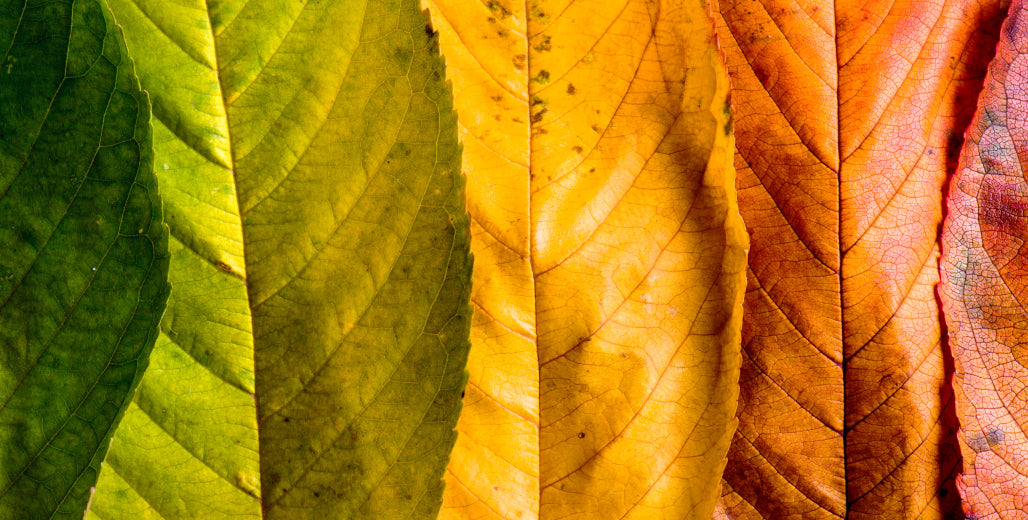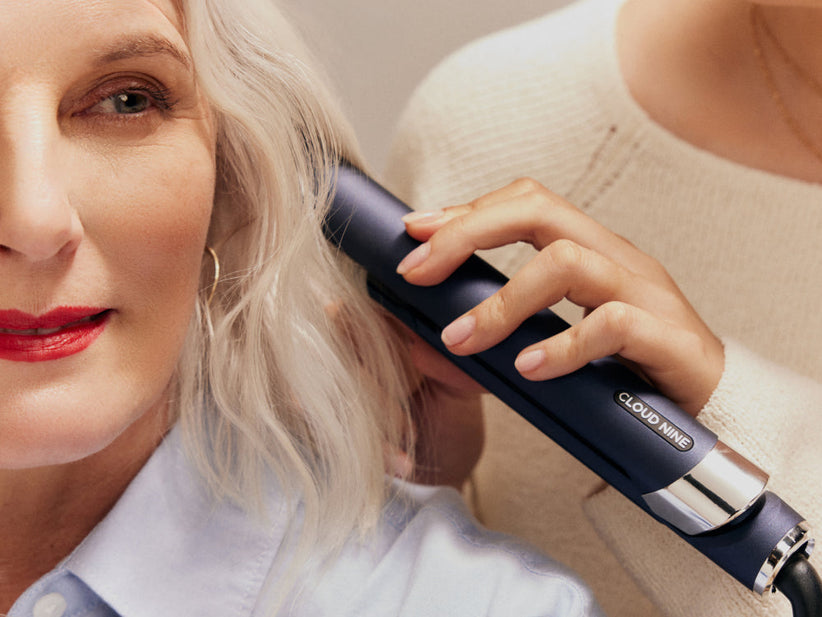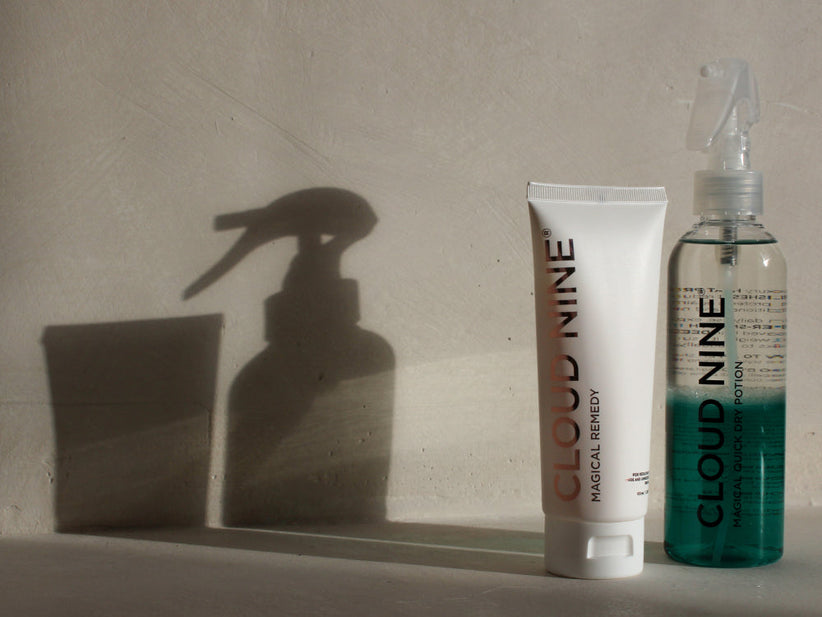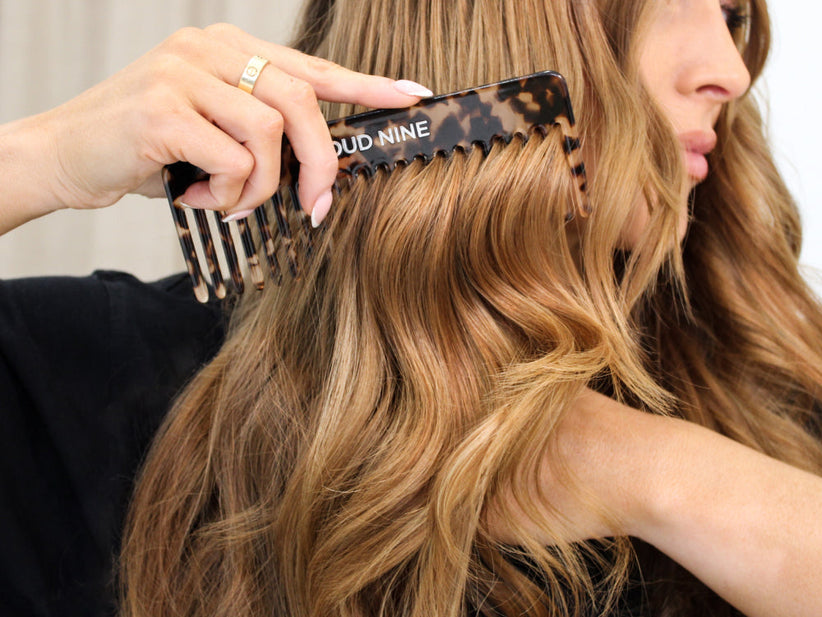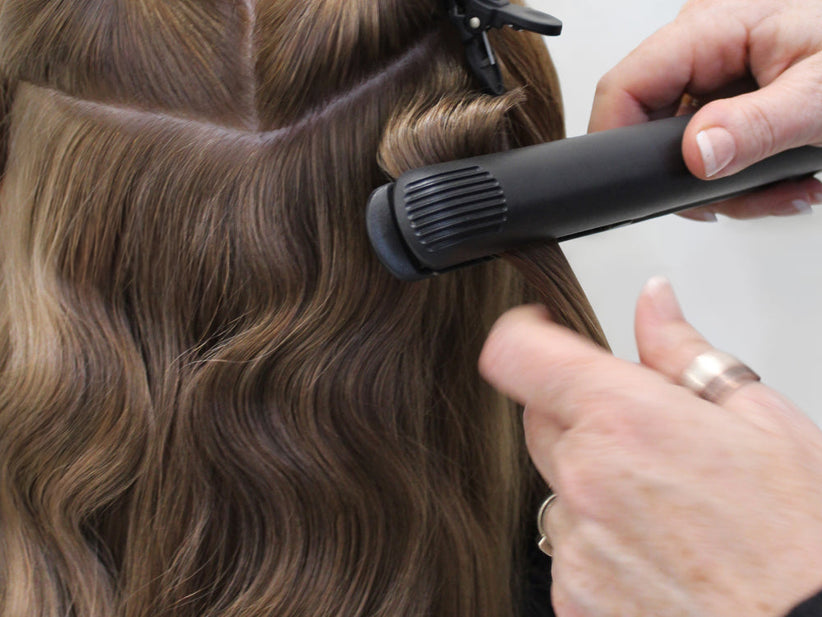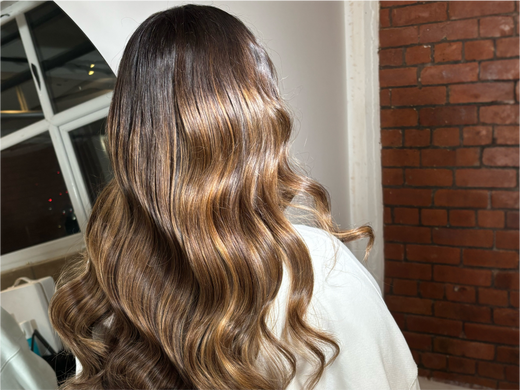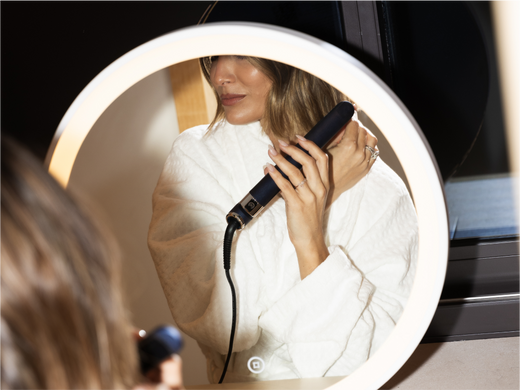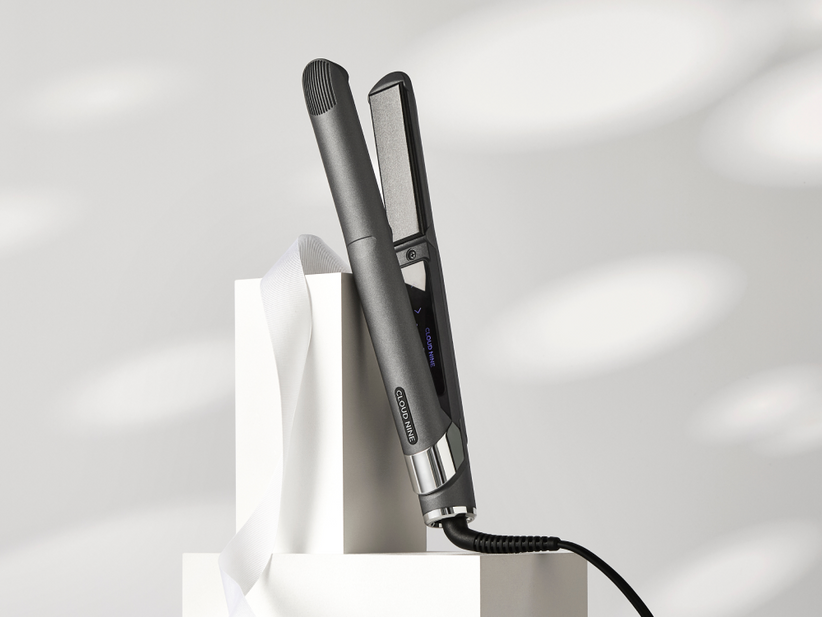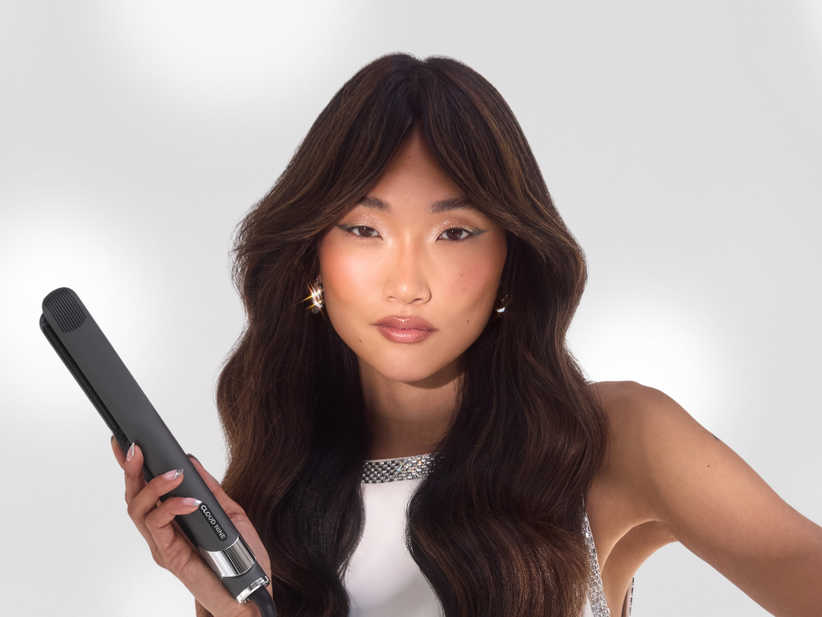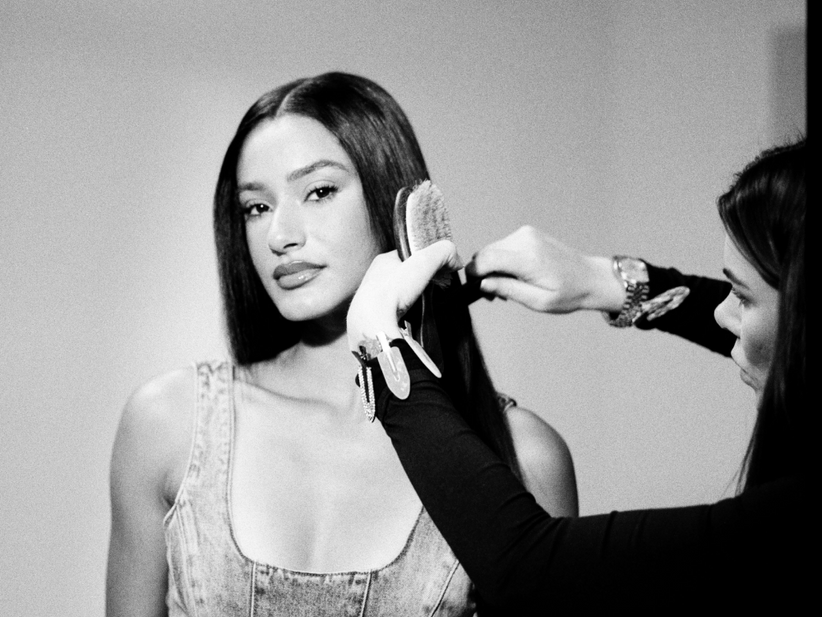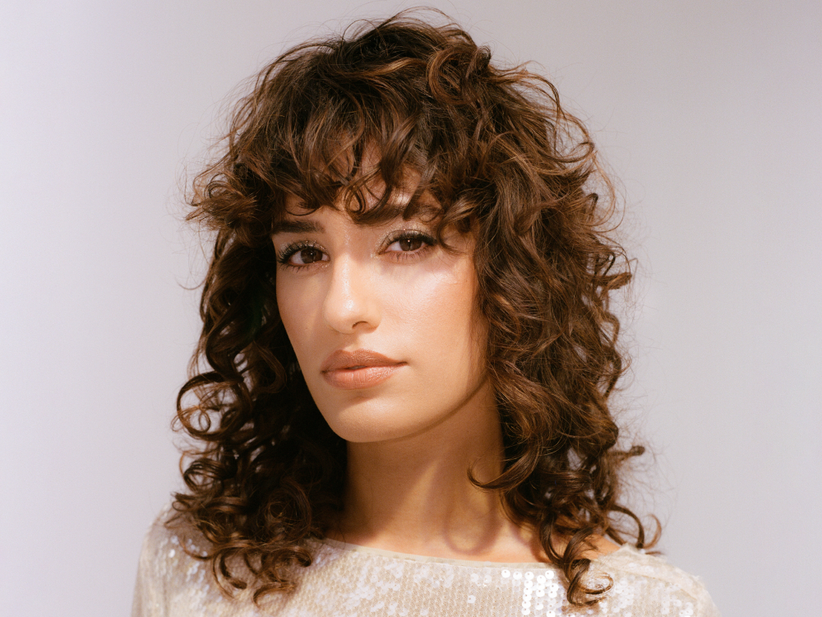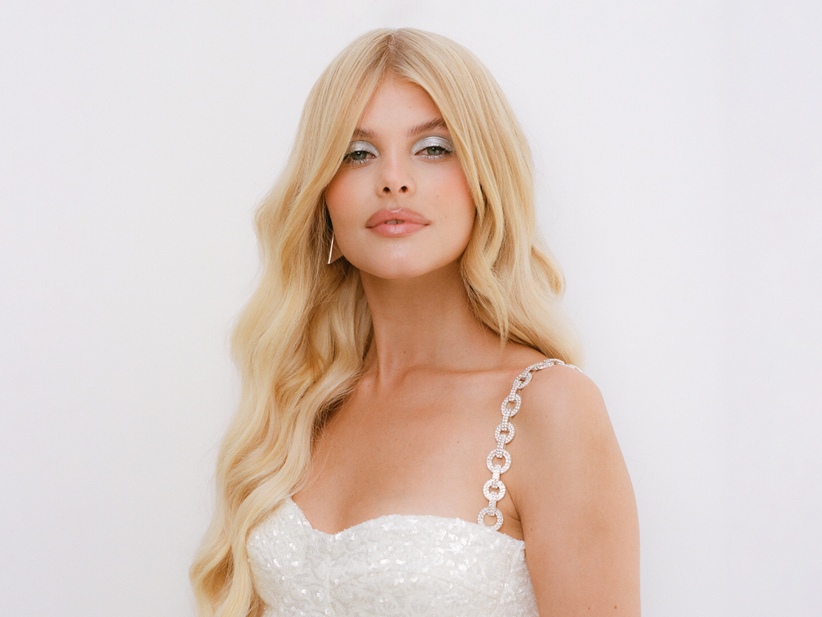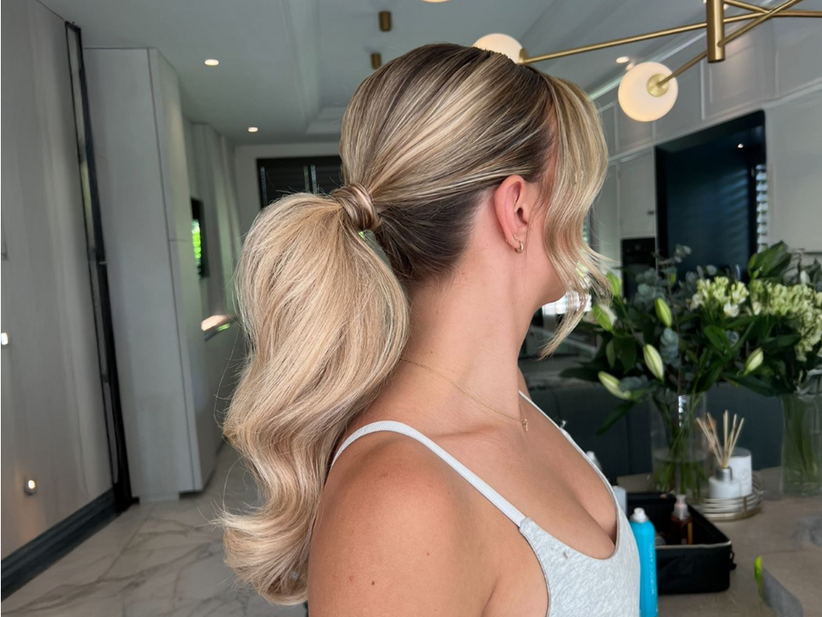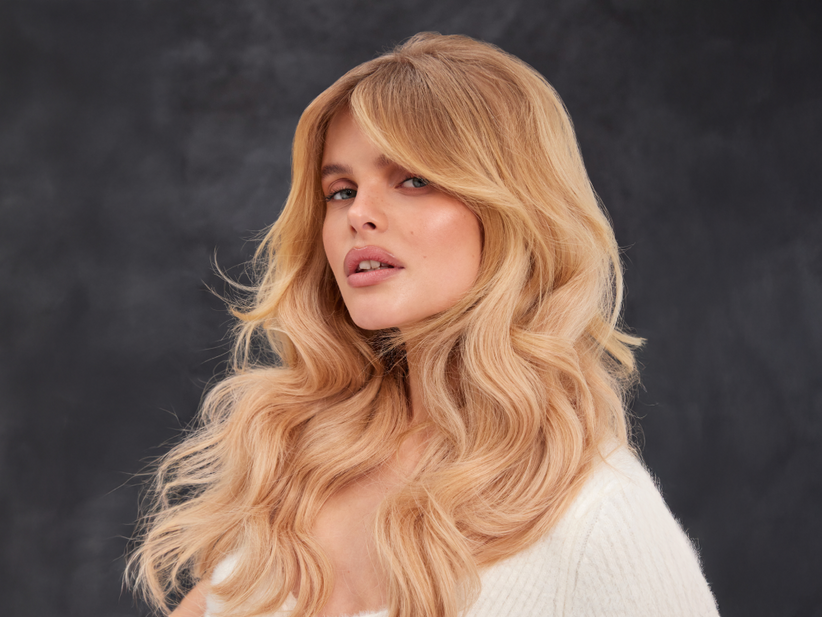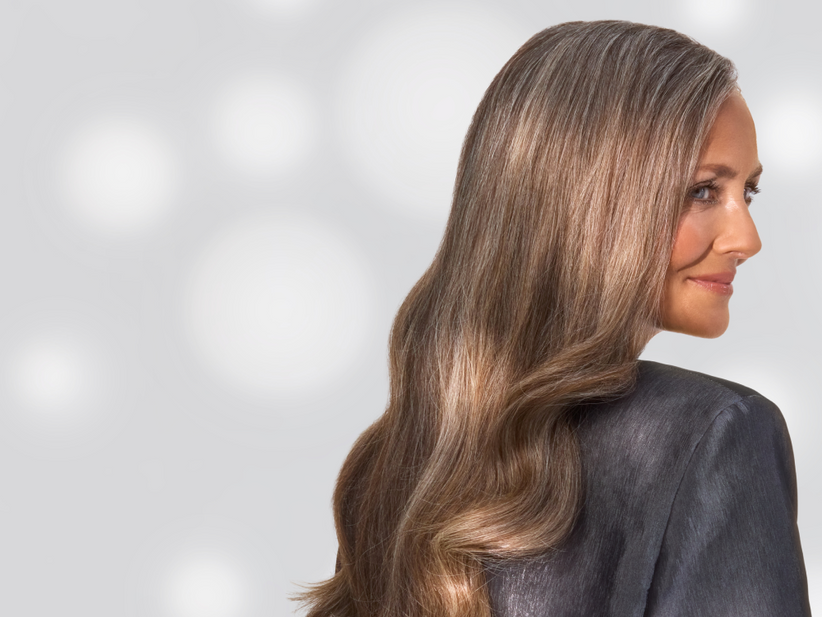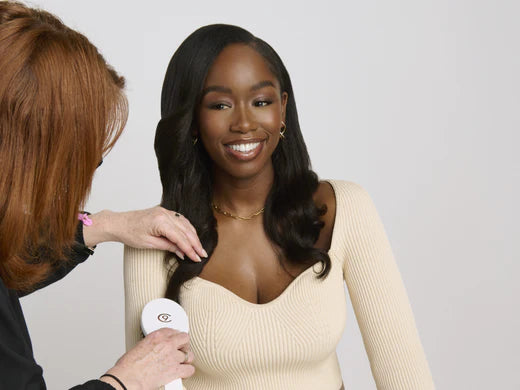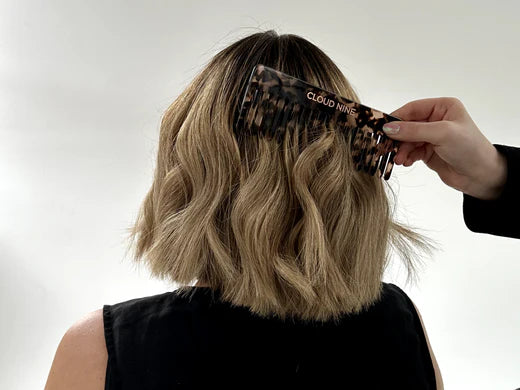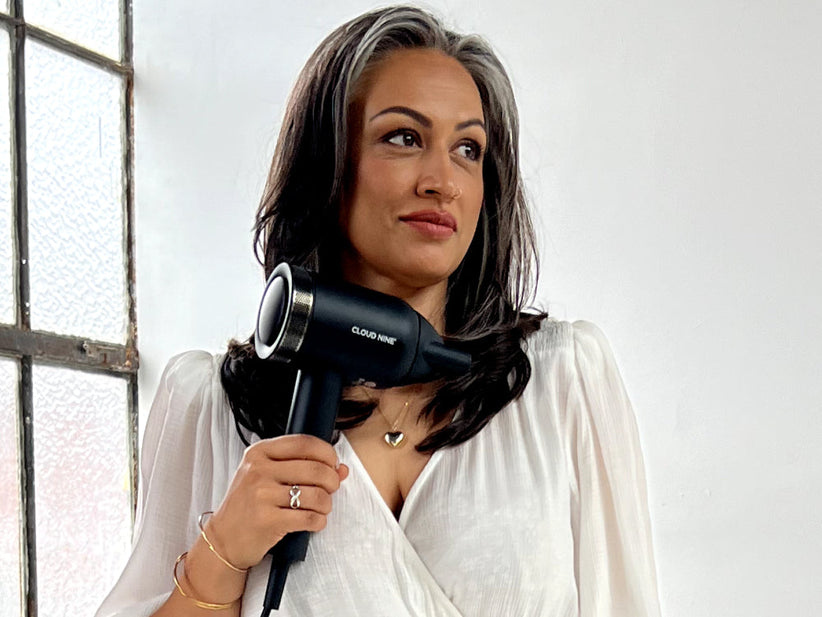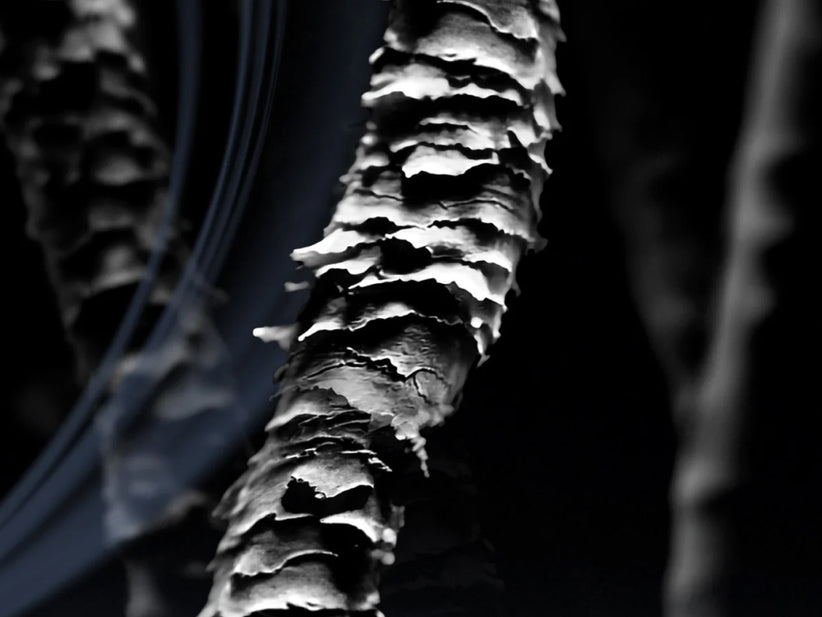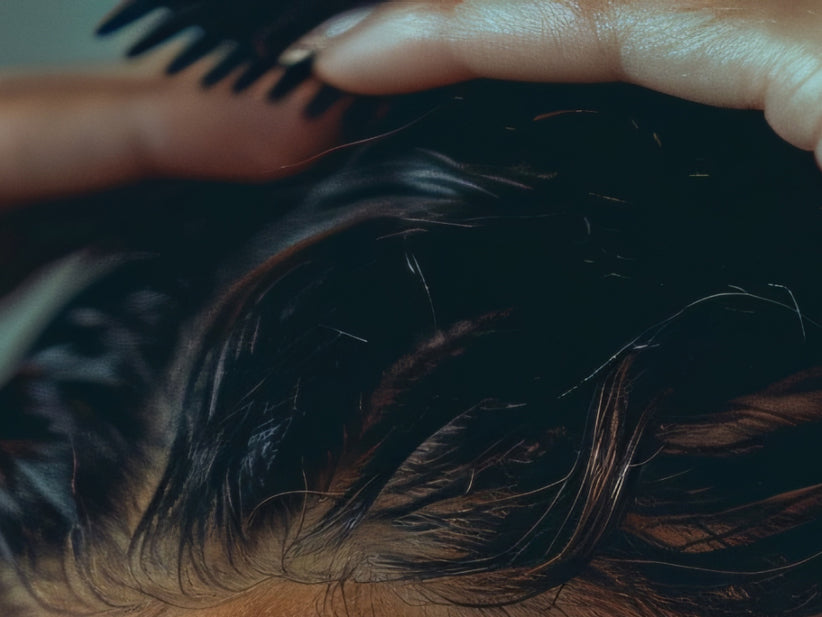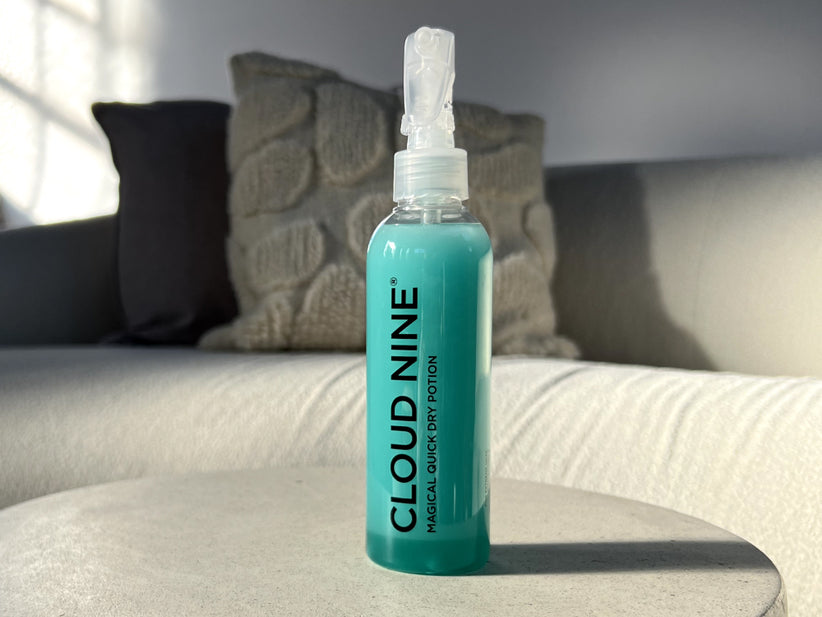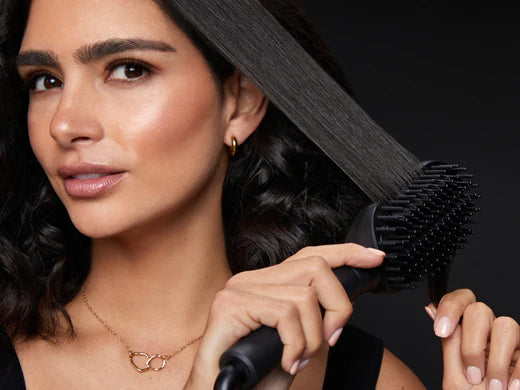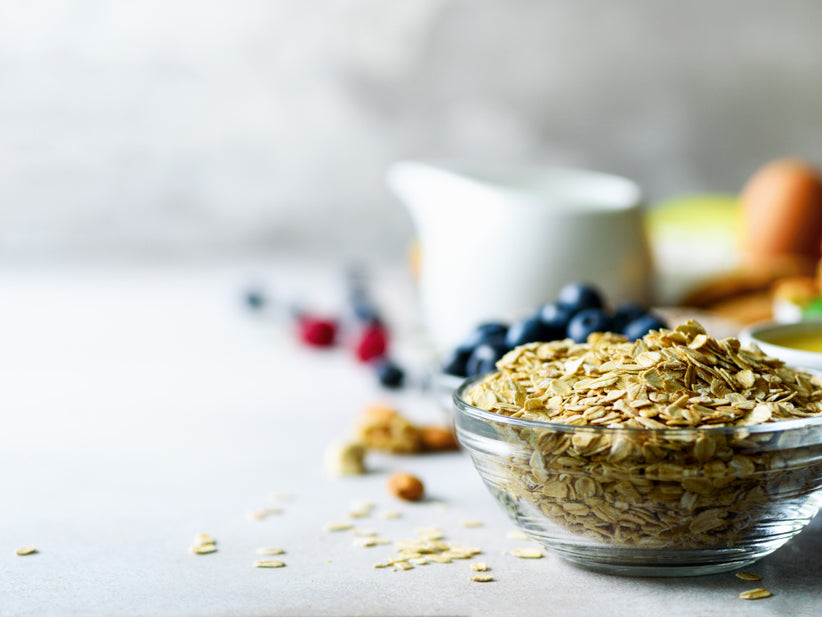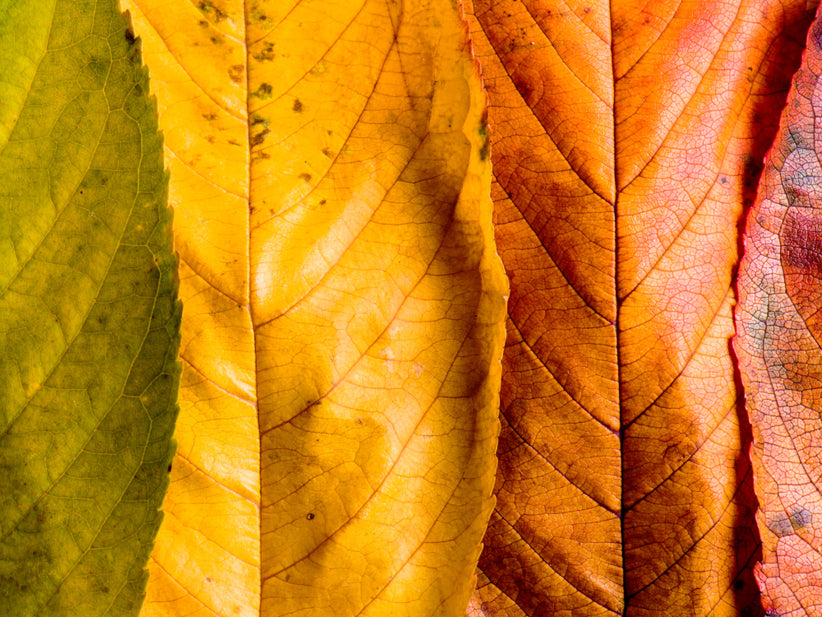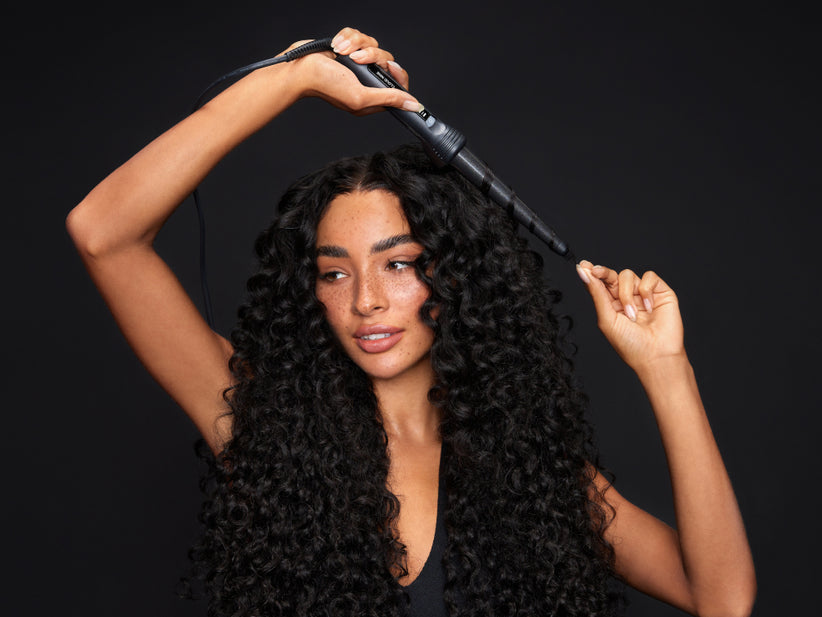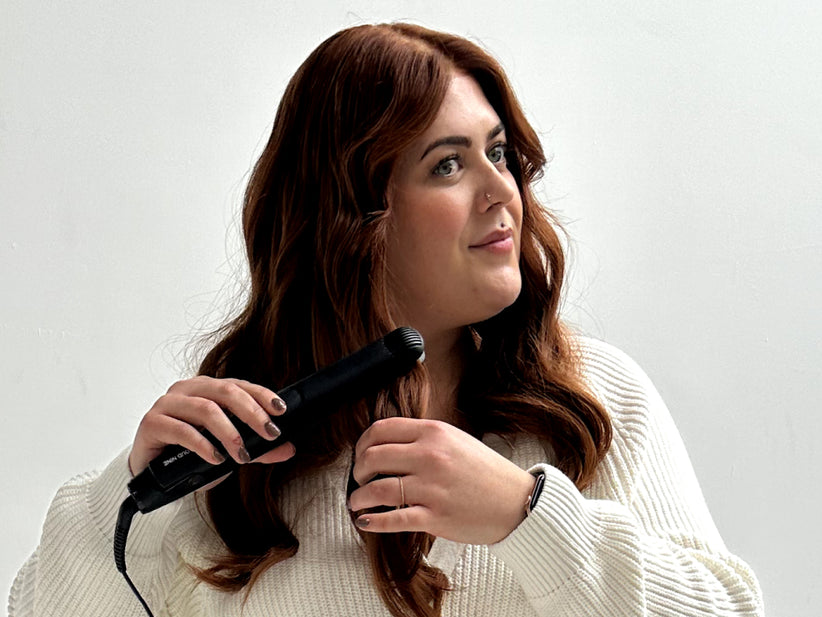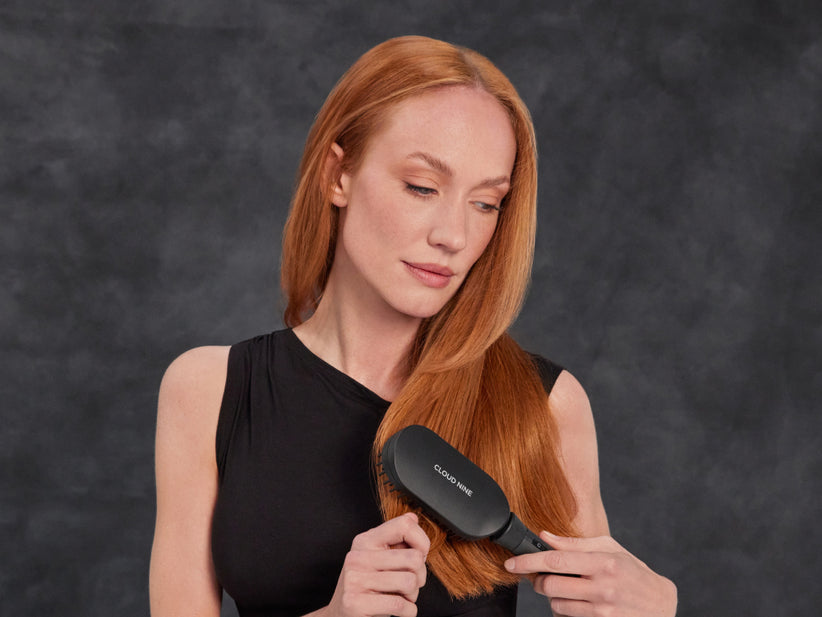Hair shedding can happen all year round for a range of reasons and can affect people in different ways. We’re here to dispel the myths about seasonal hair shedding and help you understand and manage it – whether it’s raining or sunny outside.
SEASONAL HAIR SHEDDING: KEY TAKEAWAYS
- Weather conditions such as humidity and sun exposure affect hair shedding throughout the year.
- You can adjust your hair care and styling routine to suit each season's specific needs, such as using hydrating products and UV protection during the hot summer months.
- Shield your hair from environmental stressors, including by wearing SPF protection in summer.
- Keep your scalp healthy with gentle shampoos, scalp treatments, and regular massages to promote blood circulation.
- Schedule trims to prevent split ends, avoid over-styling, and limit heat exposure to your hair.
- Support hair health with a diet rich in vitamins, minerals, and essential fatty acids.
- Loose hairstyles and silk hair accessories are kinder to your hair and can reduce hair shedding.
- Styling hair at lower temperatures can help keep your hair healthy all year round.
UNDERSTANDING SEASONAL HAIR SHEDDING
Hair shedding is a completely normal part of the hair growth cycle, but understanding why it happens can help put your mind at ease. From seasonal changes to hormonal shifts, various factors can influence the rate at which you shed hair. We have the answers to the most common questions about seasonal hair shedding below.
What is the hair growth cycle and how long is the hair growth cycle?
The hair growth cycle has four phases:
- anagen (growth)
- catagen (transition)
- telogen (resting)
- and exogen (shedding)
The anagen phase can last anywhere from 2 to 7 years, depending on your genetics. Next, it’s the catagen phase, which is relatively short, about 2 to 3 weeks. The telogen phase lasts around 3 months before the hair eventually sheds (the exogen phase) and a new one starts to grow. It’s a constant cycle of growth, rest, and renewal.
Learn more about the science behind hormones and hair.
What are the signs of seasonal hair shedding?
Seasonal shedding is totally normal and usually happens in the spring and autumn. You might notice more hair in your brush or shower drain than usual – some people even see more hair on their pillows when they wake up. Try not to panic – it’s likely just seasonal shedding doing its thing.
Tip: If you’re worried about the amount of hair you’re shedding – perhaps it’s more than you normally shed, or you’re noticing some thinning or bald patches – it’s best to speak to your doctor.
How long does seasonal hair shedding last?
Seasonal shedding typically lasts for a few weeks to a couple of months. It’s different for everyone, but if you’re noticing more hair fall during certain seasons, it should taper off on its own after a few weeks.
Why does seasonal hair shedding happen?
Seasonal shedding is thought to be linked to changes in daylight and hormonal shifts. As the seasons change, your body’s natural rhythms and hormone levels can shift too, leading to more hairs entering the telogen (resting) and exogen (shedding) phases all at once. So, it’s a bit like your hair is taking a little seasonal break. Whatever the reason, if you’ve been properly caring for your hair and scalp, you shouldn’t worry about seasonal hair shedding. It follows its growth cycle and you’ll be back to your normal shed rate in a few weeks.
What can I do to stop seasonal hair shedding?
While you can’t completely stop seasonal shedding (it’s a natural part of your hair’s growth cycle), there are some things you can do to keep your hair as healthy as possible. Make sure you’re gentle with your hair – avoid tight hairstyles and harsh treatments. Enjoy a balanced diet and make sure you’re drinking two litres of water every day. Finally, keeping your scalp healthy with regular massages and moisturising can also help.
What should I eat to help prevent seasonal hair shedding?
Choose foods rich in vitamins and minerals like leafy greens, nuts, seeds, and fish for omega-3 fatty acids. Biotin-rich foods like eggs and avocados are great too. And don’t forget protein – your hair is made of it, so lean meats and legumes (lentils and beans) help your hair stay in tip-top condition.
HAIR SHEDDING IN SUMMER
Summer often means switching up your hair routine – new styles, different products, and more frequent washing to beat the heat. All these changes can stress your hair and scalp, leading to extra shedding. If you’re finding extra strands everywhere from your pillow to your shower drain, you’re not alone. Let’s look at some of the reasons behind summer hair loss and what you can do about it.
Understanding summer hair shedding
Just like animals shed their winter coats, we humans can shed more hair in the summer. It’s all part of the hair’s natural cycle. In summer, your hair can enter the telogen, or resting phase, where it's more likely to fall out. Don’t panic – this is totally normal and new hair will grow back in its place.
Nutrition tips for summer hair health
Summer is perfect for alfresco dining, barbecues and late-evening meals. There’s no better time of year for treating yourself to delicious, nutritious seasonal produce. We’ve rounded up some summer favourites sure to find their way onto your plate:
- Berries: Packed with vitamin C, blackberries, blueberries and raspberries are abundant in the summer. Enjoy them fresh, in salads, or blended into smoothies. Blueberries make a great cereal-topper at breakfast too.
- Leafy greens: Spinach and kale are great sources of vitamins A and C and iron. Go for a summer salad or green smoothie for a nutrition boost that your hair will lap up.
- Oily fish: Salmon, mackerel and sardines are rich in omega-3 fatty acids and vitamin D – great for stronger, shinier hair. Try grilled or baked salmon, or whole-grain toast with sardines.
- Radishes: High in potassium and vitamin C, radishes keep your gut healthy and help eliminate dandruff. Slice over a salad for a crunchy lunch option.
Tips for managing summer hair shedding
From nourishing treatments to protective styling techniques, we've got all the tips and tricks for unstoppable summer hair.
1. Protect your hair from the sun
While we all know the dangers of too much sun on our skin, it also isn’t great for your hair. UV rays can weaken your hair, making it more prone to breakage and shedding. Plus, the sun can dry out your scalp, leading to irritation and more hair loss.
Protect your hair from harmful UV rays by wearing a silk or satin-lined hat, which offers both sun protection and reduced friction. Also, using hair products with built-in UV protection can further shield your hair from the sun, meaning you can enjoy the sun for longer too.
2. Rinse after swimming
After enjoying a refreshing swim in the pool or sea, make sure to rinse your hair thoroughly with fresh water, then use a cleansing shampoo. This helps wash away chlorine or seawater, preventing damage and minimising the chances of hair loss. Follow up with a moisturising conditioner to replenish lost moisture.
3. Treat your hair to a hair mask
There’s nothing better than silky, soft hair, and one of the best ways to achieve this is with a nourishing hair mask. Our Magical Remedy is perfect for this – simply leave on for 15 minutes after shampooing, then rinse out.
Styling tips to minimise summer hair shedding
If you want to show off your hair but have spotted some signs of summer shedding, we’ve got some tips for styling your hair in the kindest way this summer.
1. Use moisturising products
For great summer hair, use hydrating shampoos and conditioners. Look for ones with natural oils and skip the harsh chemicals. These can help to keep your hair in check throughout summer’s higher humidity. Our Magical Remedy is the perfect summer 3-in-1 hair product as it can be used as a nourishing wash-out conditioner, leave-in conditioner or hair mask.
2. Lower the heat on your styling tools
Summer is the perfect season for loose, beachy waves and curls, so if you have type 2 (wavy) hair or type 3 curls, let your hair dry naturally and touch it up with our Curling Wand to define your waves or curls and add some extra shine. If you’re straightening your hair in the heat, choose straighteners with Variable Temperature Control such as the Original Iron Pro, which comes with Revive ModeTM and Axial VibrationTM technology to help minimise friction on your hair to prevent pulling and reduce the chances of hair shedding.
Before using any heated styling tool, we recommend using a heat protectant like our Magical Potion and check out our Temperature Calculator to make sure you’re using the perfect heat setting for your hair type.
3. Use silk hair accessories
From a silk or satin scarf for sun protection to a silk scrunchie for a quick ponytail when you’re exercising, silk is the perfect fabric for helping you protect your hair in summer. You can also buy silk or satin in a range of different colours to match your outfit – perfect for the beach or a summer day out.
4. Go for gentle updos
If you’re attending a summer wedding – as bride or guest – go gentle with your hair. Check out our blog on wedding guest looks to achieve a beautiful wedding-appropriate style with minimal effort – and manipulation – of your hair. Our 9-Day Hair Revival offers some gentle styling advice to help you get the look you want while handling your hair with care.
HAIR SHEDDING IN AUTUMN
Autumn is a season of change - for our hair as well as the weather. Whether you're enjoying the milder temperatures, or dreading throwing on a jumper when winter comes, autumnal seasonal hair loss can be a bit concerning.
But don’t worry – this is a common seasonal phenomenon. With a few simple adjustments to your hair care routine, you can manage the extra shedding and keep your locks looking gorgeous. Read on for our top tips to help you tackle hair shedding this autumn.
Understanding autumn hair shedding
Hair shedding is just a part of its normal growth cycle, but during autumn and into the winter, the scalp tends to shed hair at a quicker rate. There's no scientific consensus on why, but it’s very common, especially among women.
Some researchers suggest that summer sun exposure stresses our scalp, leading to more shedding. Others believe we grow more hair in summer to protect against sunlight, and in autumn, that extra hair falls out since it's no longer needed. Whatever the reason, if you’re caring for your hair and scalp properly, your hair will fall back to its normal shedding rate in a few weeks.
Nutrition tips for autumn hair health
As the evenings draw in and the temperatures fall, it's the perfect time to cosy up with some of the season's best produce. These autumnal superfoods are packed with vitamins and minerals essential for keeping your hair healthy and strong. Check out our nutrition tips for keeping your hair healthy this autumn.
- Sweet potatoes: Rich in beta-carotene, which the body converts into vitamin A, these are a summer favourite. Go for a side of sweet potato wedges with your autumn lunch.
- Apples: Apples are packed with antioxidants and vitamins which help in collagen production. Perfect for snacking on the move or baking into a comforting apple pie.
- Pumpkin: Rich in beta-carotene, which your body converts to Vitamin A, pumpkins are everywhere in the autumn. For a treat for your hair, try pumpkin soup and roasted pumpkin seeds.
- Nuts and seeds: Get the nutcracker out and crack open the walnuts, Brazil nuts, and pistachios to benefit from omega-3 fatty acids that keep your hair strong and shiny.
Tips for managing autumn hair shedding
From nourishing treatments to gentle styling techniques, we'll guide you through our top tips for keeping your hair looking lush during the autumn season.
1. Choose a cleansing shampoo
It’s natural for your hair to become a little more oily as the seasons change. Wash with a cleansing shampoo – choose something with mild cleansing agents and hair-friendly ingredients like keratin and collagen. Indulge in a fragrant conditioner or hair mask too – our Magical Remedy is perfect for achieving beautiful-smelling, soft hair.
2. Trim and tidy up
A fresh trim in autumn can eliminate split ends and keep your tips healthy, especially after summer’s intense sun exposure.
3. Moisturise and protect
If you’re visiting your hairdresser for a rich autumn colour treatment, be sure to follow up with a colour-protecting, moisturising conditioner.
4. Brush with care
Be gentle with your hair during brushing and combing. If you have type 3 (curly) or type 4 (coily) hair, try combing your hair in the shower after conditioning, when it’s still wet. When brushing dry hair, try a brush with nylon bristles like our Luxury Dressing Brush which is designed to detangle without snagging.
5. Massage your scalp
With the evenings getting cosier, treat your scalp to a scalp scrub and massage. Choose a scalp scrub made from natural ingredients to wash away build-up, excess oils and dead skin cells that could hamper hair growth.
Check out our scalp health guide for more hints and tips about how to do a scalp massage and why it’s beneficial for your hair health.
Styling tips to minimise autumn shedding
Whether you're dodging autumn rain showers or enjoying the last of the summer heat as it fades, your hair can be your ultimate accessory. From effortless updos to hat-friendly styles, we've got you covered with some simple autumn hair styling tips.
1. Wear loose hats
It may be getting cooler, but in much of the country, the sun’s rays are still strong. For the kindest hairstyle, wear your hair loose under your hat – this avoids any potential pulling or tightness at your roots. If you need to tie your hair back, we recommend a silk scrunchie to reduce the chances of breakage.
2. Dry your hair gently
Now the weather is milder, it’s best not to leave the house with wet hair. Blow dry your hair quickly – and kindly – with a hairdryer that comes with Variable Temperature Control. Our Airshot Pro hair dryer comes with two click-on magnetic attachments – one for a sleek, salon-worthy blow dry, and a diffuser attachment.
The diffuser is perfect for people with type 2 (wavy) or type 3 (curly) hair as it works to distribute air around the hair strands to dry it evenly. Be sure to keep the nozzle moving constantly over your hair to avoid overheating sections of your scalp. Not sure how to find out your hair type?
3. Control frizz
Down south, Autumn humidity can cause frizz and flyaways, so use an anti-frizz serum or cream to keep your hair smooth. Check out our blog on how to style and manage frizzy hair.
If you live up north, Autumn may bring drier weather that leaves your hair in need of added moisture. Try a hair mask or treatment like our Magical Remedy to control frizz.
HAIR SHEDDING IN WINTER
As the winter sets in, you might notice a few more strands than usual on your hairbrush or clogging your shower drain. Don't panic – winter shedding is a totally normal phenomenon. Just like animals grow thicker fur for winter and then shed it in spring, our hair has its own seasonal cycle. Keep reading for our tips and tricks to keep your hair looking fabulous all winter long.
Understanding winter shedding
Winter shedding is quite common and can be down to a few key factors. Firstly, the cooler temperatures and indoor heating can strip moisture from your scalp and hair, leading to dryness and brittleness. This lack of moisture can cause your hair to break and fall out more easily. During winter, your hair may enter the telogen phase (the resting phase) more frequently, causing more strands to fall out. So, while it might be frustrating to see more hair in your brush, it's usually a normal part of your hair's natural growth cycle.
Nutrition tips for winter hair health
The winter season brings an abundance of delicious, nutrient-rich foods that can do wonders for your hair. As you enjoy those cosy dinners, you’re also feeding your hair. Here are some top picks:
- Sweet potatoes: Packed with beta-carotene, sweet potatoes promote hair growth and scalp health. Perfect mashed or roasted for a cosy winter meal.
- Citrus fruits: Mandarins, lemons, and grapefruits are high in vitamin C, and boost collagen production which strengthens your hair. Enjoy a few slices of grapefruit at breakfast or tuck into a mandarin for a snack during the day.
- Carrots: Winter is the season for stews and soups, and carrots are the perfect staple. Full of beta-carotene and vitamins, carrots are great for your hair and scalp.
- Beetroot: High in folate and manganese, beetroot is packed with goodness. Roasted, it makes the perfect accompaniment to your roast dinner, or mix it into a smoothie for a breakfast boost.
Tips for managing winter hair shedding
If you’ve noticed your hair shedding this winter, or want to keep your hair in optimum condition to reduce the chances of shedding, check out our tips.
1. Hydrate
Drier winter air can be harsh on your scalp. Use a hydrating shampoo and conditioner to keep your scalp moisturised. Check out our guide to hair hydration for info about how water benefits your hair and tips on how to keep your hair hydrated. Even if you live in an area where the humidity rises during winter, keeping your hair moisturised can help to prevent frizz.
2. Massage your scalp
Gently massaging your scalp can boost blood circulation, encouraging healthy hair growth. Treat yourself to a luxurious scalp scrub made of natural, hair-nourishing ingredients – the perfect winter pick-me-up.
3. Avoid over-washing
If you can, try to hold back on washing your hair too much during winter, as it can strip it of natural oils. Try to limit washing to 2-3 times a week and use a few sprays of dry shampoo in between.
Styling tips to minimise winter shedding
Winter can mean more time spent indoors at parties and gatherings, rather than chilling on the beach and opting for a care-free look. However, it’s possible to look fabulous without contributing to more shedding – check out our tips.
1. Go easy on the heat
Before using a heated styling tool, always apply a heat protectant like our Magical Potion, and use tools that have Variable Temperature Control.
If you dream of sleek smooth hair or perfect curls try our 2-in-1 Contouring Iron Pro as the perfect heated styling tool for winter. Its smoothing Floating Ceramic Plates contain minerals to tame flyaways, even at lower temperatures, and its Revive ModeTM with Axial VibrationTM technology reduces friction on your hair, lowering the chances of hair shedding. Head to our Temperature Calculator to work out which heat setting is perfect for your hair type.
2. Use gentle hairstyles
Instead of tight ponytails or buns, try a looser hairstyle using a silk scrunchie to ease tension on your hair. Tight hairstyles can stress your hair and lead to breakage. Indulge in some cosy luxury with a silk pillowcase, which will help protect your hair from friction while you sleep.
3. Use silk or satin-lined hats
Make sure your winter hat is lined with silk or satin to prevent friction and breakage, and don’t forget to let your hair breathe every now and then – fluffy earmuffs could be a great way of keeping your ears warm without snagging your hair.
We've covered everything you need to know to keep your hair looking and feeling gorgeous all year round. Whether it's protecting your hair from summer sun exposure, combating winter dryness, or managing shedding in spring and autumn, our tips and tricks will ensure that you can enjoy beautiful, vibrant hair no matter the season. After all, gorgeous hair is for life, not just for Christmas.
HAIR SHEDDING IN SPRING
With spring in full bloom, it's not just the flowers waking up to new life – your hair is too. As the seasons warm up, so does the growth cycle of your hair cells, leading to an uptick in hair revival. This can result in increased shedding, which might have you worried, but rest assured, it’s a natural part of your hair’s growth cycle.
Understanding spring hair shedding
Spring hair loss is part of the hair follicle development cycle and typically stops after 5-7 weeks. During the telogen and exogen phases, the hair shaft falls out while the follicle rests for 2 to 12 months before starting the cycle anew.
Research shows that an increase in temperature and sunlight can cause hormonal imbalances affecting hair growth stages. Warmer weather can push more hair follicles into the resting phase, leading to increased shedding.
If you live in a part of the country that experiences a rainy season between November and April, humidity and spring showers are also at play. These can carry pollutants from the air that strip essential nutrients from your hair.
Nutrition tips for spring hair health
A healthy, well-balanced diet is important for hair health year-round, but in spring, you can take advantage of seasonal produce to give your hair an extra boost. Here are some springtime superfoods that can help.
- Asparagus: Rich in vitamins A and C, which are essential for hair growth and scalp health. Serve with oven-baked salmon or cod and a drizzle of lemon juice for a tasty spring meal.
- Papaya: Another vitamin-booster, papaya is packed with both A and C, as well as anti-oxidants and potassium. It’s ideal for helping to maintain your scalp’s healthy sebum production, ensuring your hair remains moisturised as temperatures rise. Plus it makes a tasty snack or dessert.
- Avocado: As a big source of biotin, avocados are great for keeping your hair growing healthily. They’re also a source of potassium and magnesium, which help to keep hair looking smooth and shiny. Enjoy on toast or in a superfood salad.
- Spinach: Packed with iron and folate, spinach helps keep your hair strong and promotes new growth. Perfect sauteed with garlic, spinach makes a great side dish.
- Watercress: Watercress, with its peppery flavour, is a springtime favourite rich in vitamins A, C, K, iron, calcium, and antioxidants. It helps your immune system, bone health, and hair health, of course. Add it to salads, sandwiches, and soups for a nutritious boost.
Discover the best nutrients for healthy hair.
Tips for managing spring hair shedding
From gentle scalp massages to gentle brushing, here are our tips for keeping your hair looking shiny and lush throughout spring:
1. Go easy on the brushing
If you’re wearing hair loose in the spring sunshine, we recommend going easy on the brushing. A soft-bristled brush like our Luxury Dressing Brush will help you to detangle your hair, without yanking out too many hairs.
2. Use minimal heat
Before using heated styling tools, apply a heat protectant spray like our Magical Potion, which helps protect your hair when applying heat. Head to our Temperature Calculator to work out the perfect heat setting for using styling tools on your hair.
3. Care for your scalp
Just like facial pores, scalp pores can get clogged too, especially with increased perspiration (sweating) in warmer weather. This blockage can prevent moisture and nutrients from reaching the hair roots, causing hair to fall out and preventing natural growth.
Regular scalp massages can improve blood circulation and promote hair growth. Treat your hair to natural oils like coconut, jojoba, or argan oil. Exfoliating scrubs are a great way to remove dead skin cells to help your follicles grow healthy hair strands. Learn more about scalp care rituals with our 9-Day Hair Revival.
4. Protect your hair
If you live up north and are out and about during the rainy season, use a pea-sized amount of Magical Remedy on dry hair to help prevent frizz. Wear a hat or use hair products with UV protection when out in the spring sunshine.
Styling tips to minimise spring hair shedding
If you’re experiencing spring shedding, try these styling tips to minimise hair loss and keep your hair looking great.
1. Gentle brushing
Use a wide-tooth comb or a brush with soft bristles like our Luxury Dressing Brush to detangle your hair gently, reducing breakage.
2. Loose hairstyles
Whether you’re puddle-hopping or basking in spring sunshine, tight hairstyles can put stress on your hair follicles. Go for loose braids, buns, or ponytails to reduce tension on your scalp. Silk scrunchies are an easy way to get your hair off your face – and kind to your hair too.
3. Sun hat
Sometimes the spring sun can catch us unawares, so have a hat handy to protect your hair from those surprise rays.
- For more information about the best nutrition for your hair to prevent hair loss, check out our nutrition guide.
- If you’re worried about hair shedding or hair loss, it’s best to consult with your hairdresser or doctor for more support.
- Get involved in our hair community by heading to our socials: TikTok, Instagram or Facebook.


.jpg?v=1724142040589)


.jpg?v=1724140515432)
